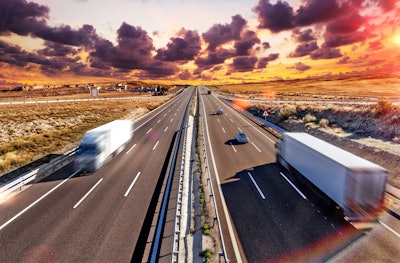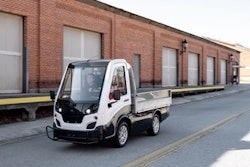
I drove past a horrible car accident on my way to work last week. Two cars were smashed in the left lane and another one was overturned in the ditch. Slightly in front of it all though was a semi-truck unscathed. As I drove past, I couldn’t help but think to myself, “I hope that truck has a camera.”
I get it, privacy is a major issue when it comes to drivers. I personally love to sing my heart out in my car, and if that was on camera for eight – 14 hours a day, I could be a viral sensation - but more likely I would be upset that I would be watched all day. But when it comes to the safety of drivers, we should at least consider them.
According to the American Transportation Research Institute (ATRI), fatal crash rates increased in 2020 while fatality crash numbers dropped because of the lack of automobile usage stemming from the Coronavirus disease (COVID-19) pandemic. However, as the country begins to open up this summer, more vehicles will be on the road.
In ATRI’s Top Industry Issues Survey, compliance, safety and accountability ranked in the top five concerns for the first time in 10 years. Over the last decade, FMCSA has implemented multiple changes to its system, but there’s still challenges when it comes to data quality, peer group assignments and the Crash Preventability Program.
In 2019 FMCSA proposed a rule change on the hours of service in order to better ensure the safety of drivers while on the road.
The proposed changes were:
- Increase safety and flexibility for the 30-minute break rule by tying the break requirement to eight hours of driving time without an interruption for at least 30 minutes, allowing the break to be satisfied by a driver using on duty, not driving status, rather than off duty.
- Modify the sleeper-berth exception to allow drivers to split their required 10 hours off duty into two periods: one period of at least seven consecutive hours in the sleeper berth and the other period of not less than two consecutive hours, either off duty or in the sleeper berth. Neither period would count against the driver's 14-hour driving window.
- Allow one off-duty break of at least 30 minutes, but not more than three hours, that would pause a truck driver's 14-hour driving window, provided the driver takes 10 consecutive hours off-duty at the end of the work shift.
- Modify the adverse driving conditions exception by extending by two hours the maximum window during which driving is permitted
- A change to the short-haul exception available to certain commercial drivers by lengthening the drivers' maximum on-duty period from 12 to 14 hours and extending the distance limit within which the driver may operate from 100 air miles to 150 air miles.
Still, camera can also provide safety features that help drivers mitigate any potential risks. In June of 2020, Verizon Connect launched an extension of its Integrated Video for Reveal product that helps fleets improve driver safety and behavior. According to the release, the feature uses artificial intelligence and machine learning to help businesses improve driver behavior and understand details of specific driving events. The technology can even capture and classify harsh driving events in near-real time, providing video analysis that can be used to protect drivers of any potential false claims if an accident does occur.
“Integrated Video provides businesses with increased visibility and context enabling them to protect the bottom line, and leverage video footage to reward and educate drivers for good driving behavior,” said Kevin Aries, head of global product success at Verizon Connect in a press release. “The user experience and video classifications are continuously improving, helping businesses make more informed decisions that can lead to improved safety, productivity and efficiency within their fleet of vehicles.”
Meanwhile, Webfleet Solutions also has HD video capability in its telematics solutions. The technology uses AI to identify risks and prevent accidents from occur. Users are able to request video from a specific time and position of a previous trip to take action in the event an incident happens. Webfleet’s video is also designed to respect the privacy of drivers as well. Drivers can configure the driver-facing camera to be on or off or tun on privacy suppressed modes so events cannot be retrieved from the device.
I hope that all those involved in the accident that I drove past were okay. As technology advances, the roads will become safer in the long run. We just have to trust these pieces in order for it to happen.


















